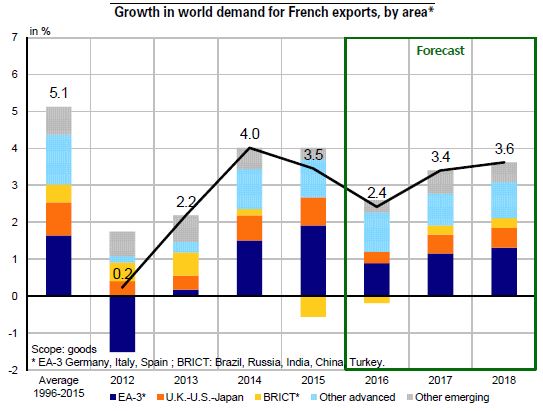Trésor-Economics No. 194 - The world economy in spring 2017: a gradual improvement amid high uncertainty
After a two-year slowdown, world economic activity should quicken in 2017, continuing at a milder pace in 2018. This acceleration will likely be driven both by the advanced economies–particularly the United States-and the emerging economies, as conditions in Russia and Brazil improve.
In the United States, after a slack in 2016, economic growth should gain momentum in 2017 and 2018 thanks to the new administration's planned stimulus measures. Similarly, Japan's economy is set to accelerate in 2017 thanks to a massive recovery package, followed by slightly slower growth in 2018. In the United Kingdom, the economy is forecast to slow, and the uncertainty over negotiations to leave the European Union (EU) should reduce GDP growth by a total of approximately one point in 2017-2018.
The recovery enjoyed by the euro area for the past three years should persist at a nearly stable pace. The European Central Bank (ECB) is set to continue providing monetary support, but the rise in inflation due to higher energy prices will likely affect household purchasing power. The divergent paths taken by the leading euro-area countries will reflect, in particular, their different fiscal stances.
The outlook for the emerging economies is contrasted. Conditions should improve in Brazil and Russia, but growth will likely weaken in China and stay below its potential in Turkey. India's economy should slow in 2017 then accelerate in 2018.
After a two-year slowdown, world trade is expected to pick up in 2017, with a moderate acceleration in 2018. World demand for French exports should display a similar profile over the forecasting horizon.
This scenario is affected by many uncertainty factors: the policy of the new U.S. administration, the extent of the impact of the Brexit referendum, and fiscal stances and upcoming election results in Europe. Political, geopolitical and financial tensions persist in the emerging economies, and China's rebalancing still raises major risks, although the reforms implemented in India could generate stronger growth than forecast. Lastly, the possible enactment of protectionist measures could dampen the world trade rebound observed in late 2016.
